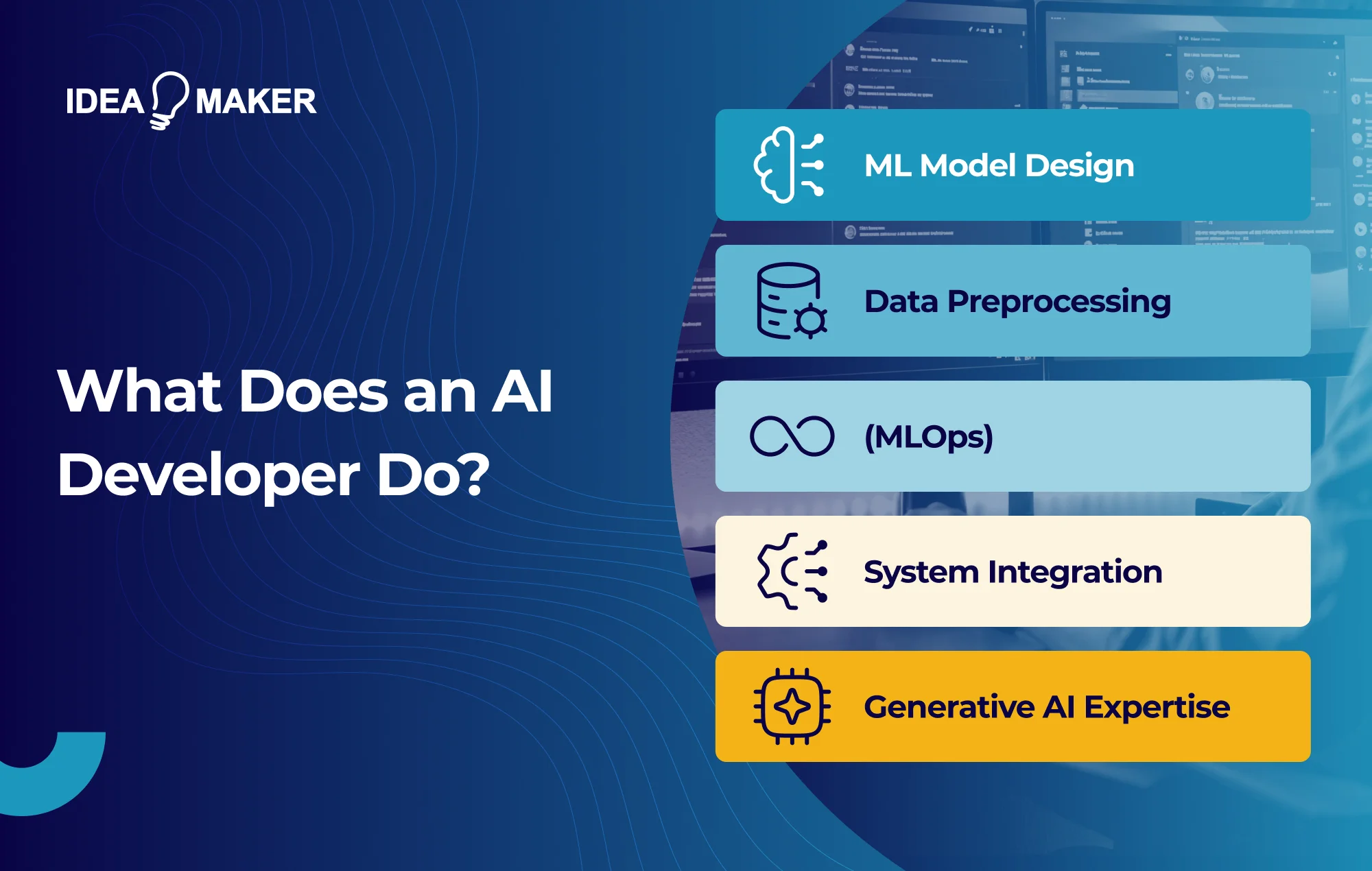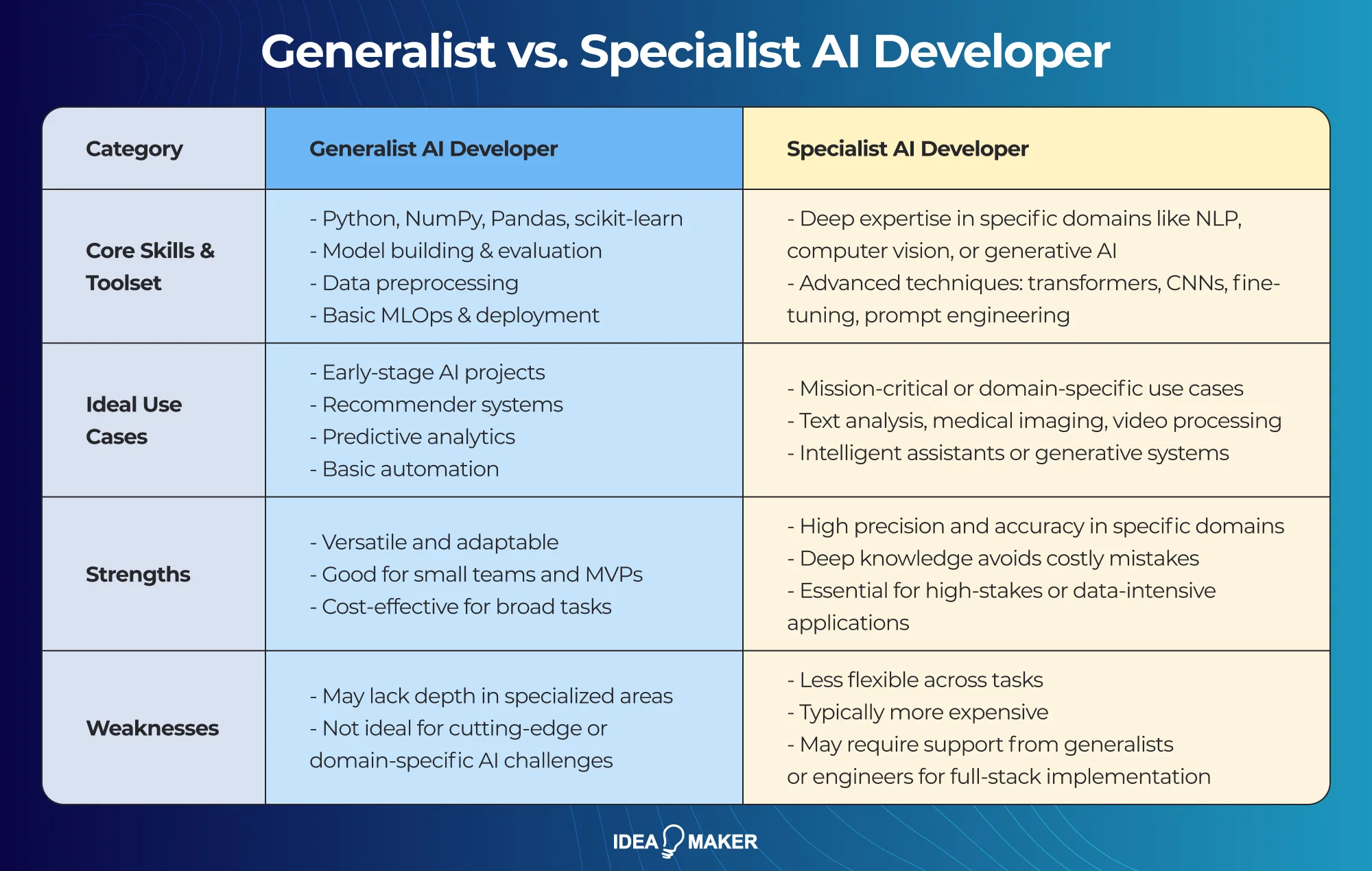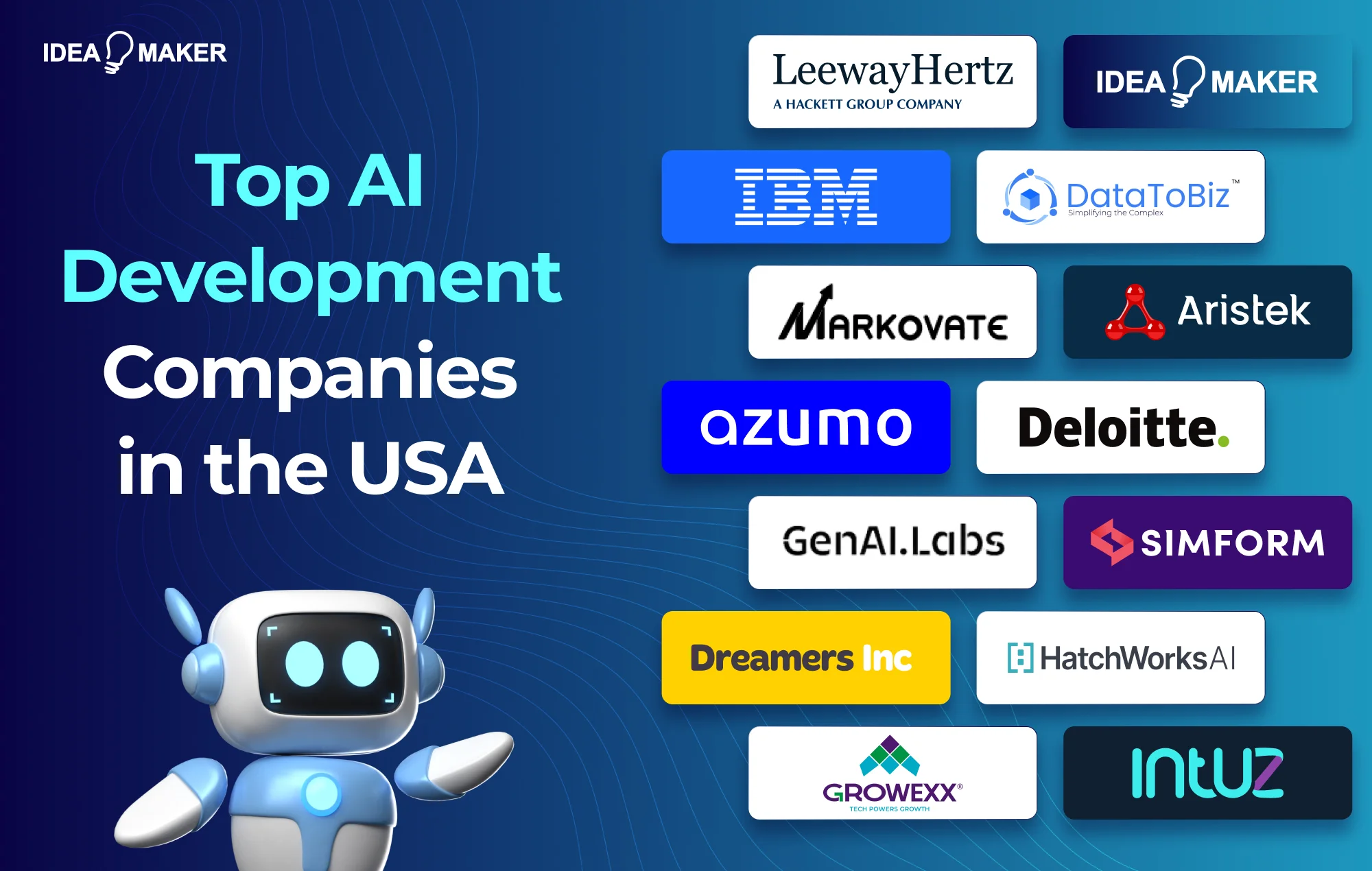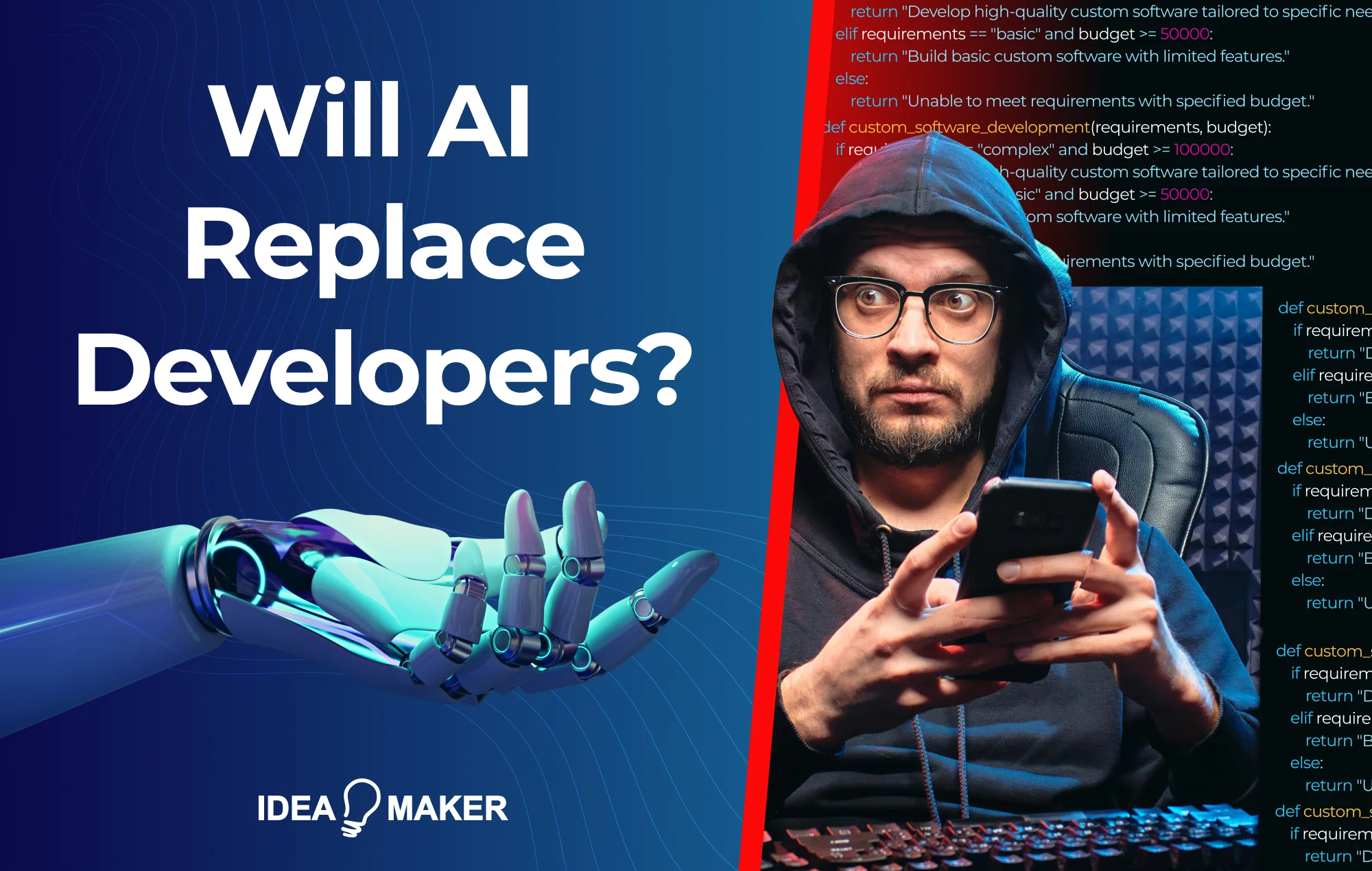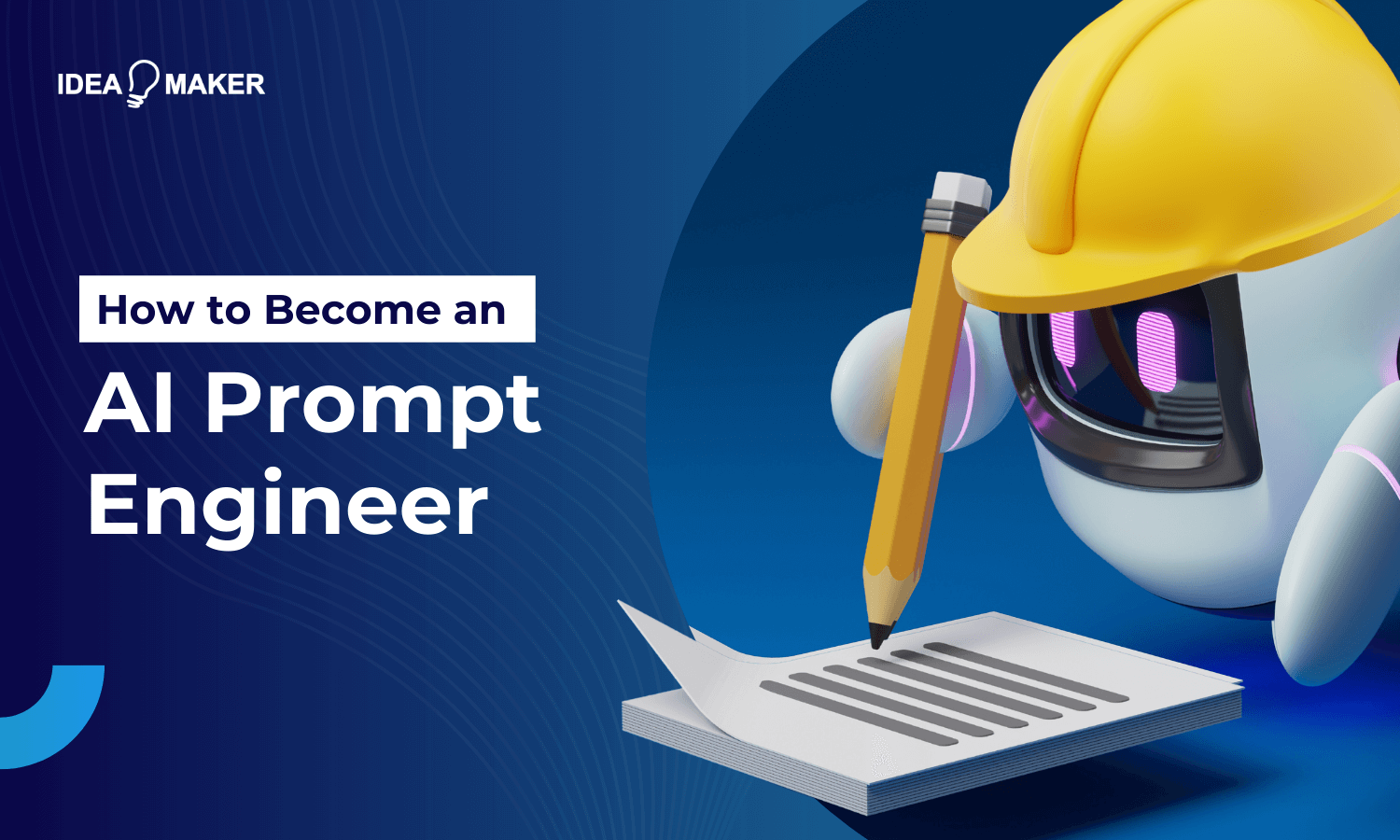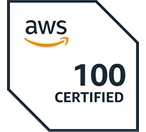In the last decade, artificial intelligence has moved from labs into the everyday life of businesses. It now drives everything from virtual assistants and recommendation systems to fraud detection and self-driving cars. What once felt experimental is now a key driver of business transformation in almost every industry.
As AI becomes more deeply embedded in business strategy, companies are aggressively looking to hire AI developers, scale their AI development team, and invest in solutions that improve efficiency, personalization, and ROI. IDC predicts global spending on AI will be over $500 billion by 2027. But as big as the promise of AI is, its full potential depends on one factor above all: talent.
According to the IDC, by 2026, 90% of enterprises will be impacted by the skills gap. The issue will cost approximately $5.5 trillion in lost revenue. This makes the need to hire artificial intelligence developers more critical than ever for companies aiming to stay competitive and innovate with AI. Hiring an AI developer isn’t just finding a jack-of-all-trades who can write Python code or construct a machine-learning model. It’s about finding experts in the AI domain who understand the business requirements, work with messy real-world data, and build scalable, ethical, and secure AI systems.
But it’s harder than it sounds. The supply of skilled AI talent cannot keep pace with the demand. AI job titles are often ambiguous, and the range of skill sets across candidates is vast. How do you even know what type of developer you’re looking for?
Whether you’re a CTO building your roadmap, a product manager looking to hire AI/ML developers, or a founder evaluating a freelance AI developer, this guide breaks it all down. We’ll walk through exactly what to look for in an AI developer, where to find top AI developers for hire, how to vet their skills, and how to build a team that can actually deliver AI-powered results.
Table of Contents
What Does an AI Developer Actually Do?
An AI developer is a professional who creates, develops, and deploys artificial intelligence systems that can learn from data and make predictions without human intervention. Unlike traditional software developers who write rule-based code, AI developers create models that adapt and improve over time with the addition of data. They operate at the intersection of software engineering, data science, and machine learning.
Let’s break down what an AI developer actually does behind the scenes:
-
ML Model Design and Training
The foundation of building AI systems involves creating and training ML models. AI developers work with algorithms like decision trees, neural networks, and transformers etc, to train systems to identify patterns, make predictions, or even create content.
Let’s say you want to build a fraud detection system for an e-commerce platform. The role for the AI developer is to determine which type of model (for instance, Random Forest vs. a deep learning solution) to use. Then he trains it on historical transaction data, and optimizes to achieve the right balance between catching fraud and not sending a false alarm to the customer.
-
Data Preprocessing
Raw data is often noisy, poorly structured, incomplete, and available in various formats. No model can be trained without first being fed with good, clean, structured, useful data. This step is really important, even if you have the greatest model in the world, it won’t give you anything if the input data is flawed. According to Gartner, 85% of all AI projects fail because of poor data quality.
Think of this step as preparing ingredients before cooking. An AI developer will normalize values, remove duplicates, filter what’s relevant, and sometimes even create synthetic data. According to a survey, more than 60% of their time is spent on data preprocessing and not coding algorithms.
-
Deploying and Scaling Models (MLOps)
It’s one thing to train a model in a Jupyter notebook. Putting it into production where it works and serves millions of people? That’s another level entirely. AI developers use MLOps frameworks to automate deployment, testing, monitoring, and model scaling. They ensure that the model performs well in production, not just on old but also on future data, is not exposed to security threats, and the model runs efficiently in production. Organizations that use MLOps are 30% less likely to discard trained models as more of their AI work goes into production.
As an example, consider a chatbot model for a customer service app that’s beginning to drift and answer incorrectly. The AI developer catches that drift and re-trains the model on the recent data without causing any disruption to the user experience.
-
Integration with Existing Systems
Your model is only useful if it integrates well with your existing system. For this purpose, an AI developer works closely with frontend and backend developers to establish seamless communication between AI-related software components and the surrounding software environment. They develop APIs, pipelines, or direct integrations to make the models work with existing front-end applications, databases, CRMs, or mobile apps. Whether it’s suggesting products in a shopping app or flagging high-risk accounts in a banking dashboard, the integration layer makes AI actionable.
-
Generative AI Expertise
Today, generative AI is rapidly gaining traction, especially with the rise of GPT, Stable Diffusion, and all other transformer models.
If your AI business use cases involve text summarization, content generation, image synthesis, or intelligent assistants, your AI developer must be familiar with foundation models such as BERT, GPT, AND T5. Also, they should have proven experience in how to engineer a good prompt, how to fine-tune and select scales, and how to optimize for inference.
Core vs. Specialized Skills: What Kind of AI Developer Do You Need?
Not all AI developers are the same, and that’s a good thing. AI development comes in many shapes and sizes, and hiring an AI developer will lead you down one fundamental path: Aim for the generalist with a smart team, or find the top-end specialist. Depending on your goals, you might be looking for someone with solid general skills or a specialist who goes deep on something like NLP, computer vision, or generative AI.
A generalist has solid experience in the following areas:
- Python programming and some important libraries (eg, NumPy, Pandas, scikit-learn)
- Model building and evaluation
- Data preprocessing and feature engineering
- Basic MLOps and deployment knowledge
They’re perfect for when you’re looking to hire AI developers to do the basics: standard ML systems such as recommendation engines, predictive analytics tools, or basic automation modeling. Consider them a “Swiss Army knife” that is highly versatile, adaptable, and suitable for early-stage AI projects or small teams.
On the other hand, certain roles do require deep domain expertise. A specialist hire is in order when your business relies heavily on a particular type of data, like text in legal tech, or video in a security start-up. These developers go deep in niche fields where mistakes can be costly and accuracy is critical. For example:
- Tasks that NLP experts work on include sentiment analysis, text classification, and building chatbots by leveraging models like BERT, GPT, or LLaMA.
- Computer vision specialists build AI that can understand visual data, like facial recognition, medical imaging, and defect detection, using specialized methods, such as CNNs and image augmentation.
- Generative AI engineers specialize in building AI models that generate text, images, code, and other media. Their domain expertise also involves automating workflows, improving decision-support tools, and customizing user interactions through LLMs, image generators, and prompt engineering. They also fine-tune language models to produce outputs aligned with particular business goals.
Consider Different Engagement Models for Hiring AI Talent
The decision to hire AI engineers not only depends on skills, but also revolves around the kind of engagement model that suits your goals, budget, and internal competencies. There’s no one-size-fits-all. It’s the one that allows you to build fast, smart, and keep up the pace. Your ideal model depends on:
- The nature of the AI problem
- Your internal technical capacity
- Timeline and budget
- If you have an AI-first product or a source of differentiation
The following are four of the favored options to hire AI developers, along with their pros and cons:
-
Outsourcing to an AI Development Company
Hire an AI development team when you want them to implement the whole cycle, from defining and shaping requirements to creating, deploying, and maintaining the AI system. They offer a broad range of specialized skills and expertise for complex or highly specialized AI projects. They frequently provide cross-functional teams (data scientists, MLOps engineers, PMs), which also takes pressure off hiring on your side.
Check out Idea Maker’s AI development portfolio to see how we’ve turned complex challenges into smart, scalable solutions.
Best for: Businesses in need of full-stack AI services and who do not want to manage the process in-house.
Where to find them: Look for vetted AI vendors on platforms like Clutch, GoodFirms, Upwork, or via industry referrals.
Pros: Scalable, low internal overhead, proven process
Cons: Reduced control, possible higher upfront costs
-
Hiring Freelancers
If you need to move quickly or fill temporary skill gaps, a freelance AI developer can be a smart choice, especially for discrete and stand-alone tasks on a project-by-project basis. This means you can scale your team up or down depending on your needs, which can be more cost-effective than maintaining a full-time team. But documentation and communication are key to managing them and holding them accountable.
However, they might not have a high degree of investment in your company’s success and may not align with your culture and processes. This can lead to communication challenges as they’re working remotely.
Best for: Short-term projects in need of quick and niche expertise.
Where to find them: Use platforms like Upwork, Toptal, or Freelancer.com with proper vetting.
Pros: Flexible, low commitment, wide talent pool
Cons: Sometimes poor quality, not easily scalable, IP/Security concerns
-
Building an In-House AI Team
Choosing to hire AI developers in-house gives you full control as they are always aligned with long-term corporate goals, culture, and you get continuous access to institutional experience. Provide continuous development and maintenance of AI projects. But building an AI development team can be time-consuming, expensive, considering the costs of salaries, benefits, and ongoing training. And needs the right leadership.
Best for: Organizations that will invest for the long term in making AI a core capability.
Where to find them: Source from LinkedIn, AI-focused job boards (like ai-jobs.net), tech communities, or university networks.
Pros: Greater control, specialized knowledge, long-term value
Cons: Higher initial expense, slower to ramp up, difficult to recruit top talent
-
Partnering with a Dedicated AI Development Company
Unlike outsourced partners in general, dedicated AI development partners are members of your team. Here, you have consistency and institutional memory, and deeper collaboration without the complexities and overhead of hiring in-house. For instance, A SaaS company in healthcare works with an AI-focused partner to constantly improve its diagnostic model based on feedback from users and new data.
Best for: Medium- to long-term relationships where AI is important but there isn’t extra bandwidth internally.
Where to find them: Reach out to firms that offer a dedicated team model, typically listed under “team augmentation” or “dedicated development” services.
Pros: Strategically aligned, scalable team, consistent delivery
Cons: Ultimately more expensive than freelancers, need a strong collaborative culture
How to Hire an AI Developer? Step-by-Step Guide
Hiring AI engineers, like with any tech position, begins with clarity about your objectives, your required tech skills, and where AI will fit into your product or operations. The following is a step-by-step guide designed to help you make better, targeted hiring decisions.
Define How an AI Developer Can Help You With
Before you get to reading through resumes or evaluating vendors, be certain of why you need an AI developer at all, because not all AI-powered projects need in-depth expertise in creating complex models. Sometimes, a simple API, no-code AI platform, or pre-trained model can get the job done more quickly and for less money.
But if what you’re aiming to do is solve a complex, highly custom problem like automating high-stakes decisions, or building out smart user-facing systems, or extracting insights from messy, unstructured data, it’s likely the case that you do actually need a developer with deep artificial intelligence skills.
Start where you hope to end, not with the technology. What are you actually trying to do?
- Is the goal to automate manual decision-making?
- Is smart customer interaction important?
- Do you want your large, unstructured data sets to have meaning?
- Begin with the end, not the technology. This will inform the rest of what you do.
-
Identify the Specific Business Problem or Opportunity
Be precise. Rather than “we want AI in our product,” say:
- “We want to resolve customer support tickets with a chatbot.”
- “We want to be able to detect fraudulent transactions in real time.”
- “We want to recommend things to people that are personalized.”
Once you narrow down the use case and are clear on the problem you are trying to solve in your business, it’s much easier to figure out the type of developer (and the model) you need.
-
Decide Whether You Need R&D, an MVP, or a Production‑Grade System
Your stage will dictate your hiring. Don’t hire for production when you’re still experimenting, and don’t believe that someone who writes papers will build scalable infrastructure.
- R&D Stage: You have to find someone experimental, usually with an academic or research background, who can email dozens of directions and publish early findings.
- MVP (Minimum Viable Product): You want a generalist who can hustle, write short proof-of-concepts or prototypes, and validate core functionality.
- Production-Ready System: You will need developers who appreciate deployment, scaling, monitoring, and real-world constraints (like latency, data drift, and privacy).
-
Know What Kind of AI Expertise Is Needed
AI has subfields. The kind of data you’re using will dictate the kind of expert you’ll need. Hiring the wrong category of expert can set you back months in misdirection. For example:
- Working with text, speech, language, and conversational AI? NLP expert.
- Images or video? Computer vision specialist.
- User-facing assistants or AI-generated content? Generative AI engineer.
- Predictive analytics or structured data? In many cases, a general machine learning developer is sufficient.
-
Define the Tech Stack
Not all AI developers will use the same tools. Your desired tech stack will help you filter more effectively. List your must-haves and nice-to-haves. It helps avoid mismatches later.
- Languages: Python is everywhere, but an understanding of C++, Java, or Go may be important for production.
- Libraries and API: TensorFlow, PyTorch, Hugging Face, OpenCV, LangChain, etc., depending on the task.
- Infrastructure: Do you want someone who can deploy on AWS, Dockerize, manage an API, or work with edge devices?
-
Determine the Right Seniority Level
Experience is not only about years of experience, but also the amount of ownership and complexity the candidate can manage. Match the role with the scale of your project. It’s a waste of budget to hire a senior AI developer to lead a small MVP. Putting a junior engineer on a critical system could threaten reliability. You should choose:
- Junior Developers: For well-defined tasks, assistant roles, and data annotation.
- Mid-Level Developers: To work with modules, train a model, and put it into a product.
- Senior Developers/Architects: To define AI strategy, select models, lead end-to-end implementation, and guide build vs buy decisions.
Write the Perfect AI Developer Job Description
A job description is more than a checklist of requirements; it’s your first handshake with potential talent. The best candidates aren’t just scanning for compensation, they’re evaluating mission, growth, and whether it will be possible to make a significant difference. A great job post eliminates the noise and pulls the right candidates in.
The following are some key sections to include in writing a compelling AI developer for hire job description:
-
About the Company and Mission
Begin by giving candidates a reason to care. Show your company does, what problem you’re trying to solve. When writing it, hit a balance between concise and meaningful, highlight purpose and impact, and define how AI fits into your roadmap.
For example:
“At Idea Maker, we help startups and enterprises develop and build scalable and production-ready custom AI solutions. We’re building a sentiment analysis engine for a fast-growing e-commerce brand, which interprets thousands of customer reviews and provides real-time insights for smarter product decisions and customer satisfaction.”
-
Responsibilities (Be Specific)
Don’t use fuzzy terms such as “build machine learning models.” Instead, indicate the work the candidate will actually be doing on a day-to-day basis. When writing the list of responsibilities, think in terms of outcomes, not tasks. Following is a list of sample responsibilities of the AI engineer who will work on a sentiment analysis project. Customize these to work for your domain (NLP, vision, forecasting)
- Develop, train, and tune NLP models, including models for sentiment and intent detection.
- Work closely with product & data teams to create labeling strategies.
- Implement models with AWS SageMaker and track performance after the model goes live.
- Re-training the models regularly as new member data arrives
- Be involved in architecture discussions about scaling ML pipelines.
-
Required Technical Skills
This part should be obvious about what’s important to be successful in the role. Keep it real, i-e, don’t say “10 years of experience” in a 5-year-old framework. Avoid buzzword overload and accommodate skills to the real stack applicable. Continuing the same example for the sentiment analysis project, the must-have skills should include:
- Relevant coding skills in Python and its libraries (NumPy, Pandas).
- Background in ML frameworks like PyTorch / TensorFlow
- Excellent knowledge of NLP or transformer-based models (BERT, GPT, for example)
- Knowledge of data preprocessing, model evaluation, and MLOps flows
- Hands-on experience in exposing developed models as REST/endpoint APIs/ Docker/Cloud services (AWS/GCP)
-
Preferred Experience
This section separates the good candidates from the great ones. It’s particularly helpful when you are looking for people who can add value “beyond the code.” Consider this a bonus list, not hard borders. For example, in our case, preferred qualifications would include:
- 3+ years of experience in applying NLP models in production
- Donations to open-source AI projects or GitHub profiles
- Published ML research or practical ML research experience
- Experience with on-prompt engineering and LLM fine-tuning (if applicable)
-
Soft Skills
Even most competent developers will not succeed without communication, curiosity, and a fit within the team culture. Include soft skills on your must-have list, not as an afterthought. The reason is that your developer will work closely with product, UX, or business teams. Some common soft skills to look for when hiring an AI developer include:
- Great problem-solving and analytical skills
- Able to articulate ML concepts to non-technical stakeholders
- A team player who does well in a cross-functional environment
- Understanding of AI ethics, bias, and responsible use
- Exceptional enthusiasm for learning and a fast learner
Expert tip: Keep the tone human. Avoid jargon, keep it real, and reflect your company’s personality in the copy. Because you’re writing for people who want to do meaningful work, not machines scanning for keywords.
Red Flags to Avoid
Even well-intentioned job posts can backfire if they’re poorly scoped or unrealistic. Some common red flags to avoid include:
- Overstuffing requirements: You can’t list every framework, language, and AI buzzword, as it doesn’t make the job description sensible. Doing this discourages strong candidates who don’t check every one of those boxes, yet are more than capable of delivering. Concentrate on these must-haves that align with your project requirements.
- Confusing Roles: Hoping for someone to be both an AI researcher and one to do production deployment indicates unclear needs. Research and engineering demand different mindsets and skill sets. Mixing them together casually can repel the best talent and lead to bad hires.
Where Can You Source High-Quality AI Developers For Hire?
Finding a high-quality AI developer means going where they already build, share, and collaborate. The very best developers are not only on job boards, they’re also contributing to open-source projects, participating in challenges, or even writing new research. Some of the sources include:
- GitHub, Kaggle, ArXiv, Stack Overflow, LinkedIn: Search for developers who share code, publish research, or answer technical questions regularly. Their contributions tend to speak louder than a résumé.
- AI/ML Communities: Tools and platforms such as the Hugging Face forums, Reddit’s r/MachineLearning, or Discord servers draw practitioners actively discussing real-world challenges and model optimization.
- Top Conferences (NeurIPS, ICML, CVPR): People who attend or present at these events are typically on the frontier of AI. You can recruit through networking events, poster sessions, or conference job boards.
- Clutch.co for Agency Partnerships: If you’re looking for agency partners, Clutch is ideal for comparing verified reviews, case studies, and specialties. Check out our Clutch profile to see how Idea Maker is bringing authentic AI to life. You’ll see references, in-depth client reviews, and more on what it’s like to work with us and how we build robust, scalable solutions based on AI.
Screen Resumes for Signals, Not Buzzwords
Don’t be sidetracked by buzzwords like “deep learning” or “AI enthusiast” when hiring AI developers. Rather, concentrate on specific indicators of real-world competence. Look beyond keywords, hire for substance.
- Prioritize candidates who’ve been proactive about taking ownership over an entire project, from data collection and preprocessing to model training and deployment. This end-to-end experience shows they get the whole ML lifecycle, not just disparate pieces.
- Review their GitHub repositories, open-source contributions, research papers, or competition profiles (e.g., on Kaggle) to judge how they write code, document work, and solve problems. These contributions reveal so much more than blanket allegations.
- Make sure not to ignore red flags, such as resumes with lots of coursework but no actual work, no measurable results (not necessarily numbers, but things like Impact: accuracy, latency, ROI), or a pattern of working alone and not very often collaborating. These can be indicators of no production experience or bad team fit.
Interview and Evaluation Process
Once you’ve shortlisted the interview candidates, the next step is to conduct the interview, deciding who should be on the panel and the interview stages. A structured interview process ensures you identify candidates who can deliver real value, not just pass a coding test.
Who Should Be on the Panel?
Include a combination of roles involving a senior ML engineer, a data scientist, a product manager, and someone from engineering leadership. This guarantees that both technical depth and cross-functional engagement are being checked.
Interview Stages
Break the process into stages that progressively reveal the candidate’s strengths and gaps. Each stage should evaluate both their ability to build AI systems and their capacity to work effectively in your environment.
- Technical Phone Screen: Evaluate their understanding of ML basics, real-world application experience, and familiarity with your tech stack.
- Coding + ML System Design: Go past syntax, focus on how they structure pipelines, select models, consider edge cases, scalability, performance.
- Applied AI Case Study: Illustrate with an example, e.g., “Build a recommender system.” Seek patterns in how they handle data, model choice, evaluation metrics, and iteration.
- Cultural Fit + Collaboration Interview: See how they collaborate with product teams, give light to trade-offs, and harmonize with company values and long-term objectives.
Foster problem-solving and modeling over algorithms and memoization. Good candidates aren’t just howlers; they explain why they make their choices. Also evaluate on soft skills such as adaptability and communication.
Bonus: What Questions to Ask in the Interview
Ask questions that reveal thought process, not just textbook knowledge. Below is a list of some common questions you should ask during the interview:
- What’s the difference between supervised, unsupervised, and reinforcement learning?
- How do you choose between different machine learning algorithms?
- Can you explain the bias-variance trade-off in your own words?
- What are the key steps in building a machine learning model?
- How do you handle imbalanced datasets?
- How would you evaluate the performance of a classification model?
- What’s the difference between L1 and L2 regularization?
- How do you debug a model that isn’t learning?
- Tell me about an experiment where you improved model accuracy. What did you try?
- How do you approach hyperparameter tuning?
- Have you read any recent AI papers that influenced your thinking or work?
- How do you decide when to use transfer learning?
- How would you explain your model to a non-technical stakeholder?
- Describe a time you had to convince others of a technical decision.
- Have you collaborated with data engineers, product managers, or designers? How did that go?
- What motivates you to work in AI?
- What’s the most challenging project you’ve worked on, and what did you learn?
- How do you keep your skills up to date in a fast-changing field?
Make the Offer, Close the Candidate/Company
You’re not done hiring once you’ve found the right fit; you’re done when they accept your offer. The way you execute the closing process, whether you are recruiting an individual developer or contracting with an AI agency company this can make or break the deal. The best candidates and the best companies are typically entertaining multiple different offers, meaning that the way you communicate value, trust, and alignment is just as important as the offer itself.
For Individual Candidates
When making an offer to an AI engineer for hire, it’s all about speed and clarity. Delays or unclear messaging, at this stage, may make you lose your best talent to companies that move more quickly. Be timely, to the point, and make it personal why you selected them personally, and what is exciting about them being on board. Experienced AI builders are especially concerned about the impact they’ll have. Make sure your offer reflects the types of problems they’ll be solving, their level of ownership, and how their work feeds into the bigger picture of what it is you’re building.
For AI Development Companies
When closing with an AI agency or development partner, move the conversation from procurement to partnership. It’s just that the best firms don’t only want projects, they want long-term partners that they can grow with. Consider your proposal as a basis for a strategic relationship. Be open about your objectives, deadlines, capacity, and expectations from within. Agencies love a clear brief because it’s the building block for successful delivery.
Common Hiring Pitfalls to Avoid
Even with the best of intentions, hiring for AI can go off track if you’re not careful. These wrong turns can cost you time, budget, and even the entire project. Some common hiring mistakes to avoid are:
Hiring a Generalist When You Need a Specialist
Say you’re building a tool for analyzing medical images. It might seem appealing to hire a generalist with light AI expertise, but when it comes time to optimize a convolutional neural network or do edge-device optimization, you’ll come to a standstill. Specialized problems demand specialized skills. Don’t under-hire for key technical depth.
Expecting AI to Solve Undefined Problems
Many companies fall into the trap of saying “we want to use AI,” rather than defining what success looks like. AI isn’t magic; it requires a well-defined problem. For instance, instead of “improve customer service,” establish a specific goal such as “automatically categorize support tickets with 90% accuracy.” Only then can the correct solutions be constructed.
Relying Too Much on Academic Credentials
A PhD is good on paper, but doesn’t always lead to production-ready results. Many of the best AI developers don’t have PhD degrees in computer science. But they have delivered real systems, contributed to open source, or have won Kaggle competitions. Value practical experience and problem-solving skills over degrees alone.
Ignoring System Engineering/Deployment Needs
You may bring on someone with wonderful modeling skills, but if they struggle to get their models into production, it might not even matter. Real-world AI is an ad hoc combination of modeling and engineering. The candidates should know about CI/CD, APIs, cloud infrastructure, and monitoring (not just Jupyter notebooks).
By sidestepping them early, you can save yourself the pain of backing out of a rebuild or of hiring a team that did not fully understand the implications and alignment of talent. You do smart hiring based on smart scoping.
Final Thoughts
Finding the best AI developer is a strategic decision. From setting your business goals to deciding whether to go with a generalist or a specialist, tech is very much like that tango. Clear role scoping, a thoughtful evaluation process, and avoiding common hiring traps will put you on the path to building AI solutions that truly deliver impact.
Whether you are constructing a sentiment analysis engine, a fraud detection system, or a generative AI feature, it all begins with the right AI developer.
Need expert help?
At Idea Maker, we have helped startups and companies get their AI ideas off the ground from strategy and architecture to full-stack development and deployment. Whether you need a partner to design, develop, or scale your AI capabilities, schedule a free call to discuss how we can provide personalized AI development services that meet your business objectives.

